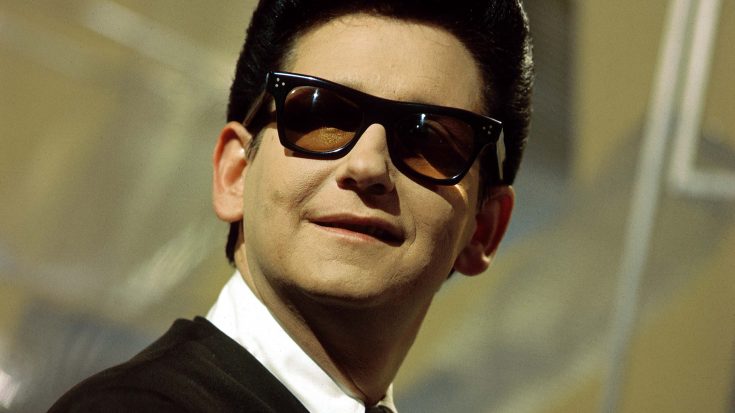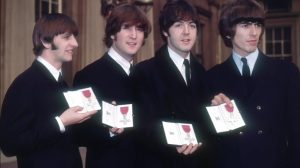Whatever Happened To Roy Orbison’s Wealth After He Died

UNITED KINGDOM - FEBRUARY 01: THANK YOUR LUCKY STARS Photo of Roy ORBISON, Roy Orbison posed on set of tv show (Photo by David Redfern/Redferns)
Boasting an impressive tally of 23 Top 40 hits, which included two chart-toppers, the singer-songwriter Roy Orbison crafted a flourishing career that not only won the adoration of fans but also earned the respect of his contemporaries.
Notably, even the revered Elvis Presley, often hailed as the King of Rock and Roll, expressed profound admiration for Orbison’s musical prowess, going so far as to label him the greatest musician to have ever lived.
Orbison’s distinctive stage persona, characterized by his penchant for black attire and oversized sunglasses that concealed a significant portion of his face, served a dual purpose. Beyond being a style statement, these visual elements played a crucial role in boosting the confidence of a performer who openly grappled with severe stage fright.
The impact of Orbison’s contributions to the music industry extends far beyond mere chart achievements. His influence is encapsulated not only in the enduring popularity of chart-topping hits but also in the lasting impression he made on fellow musicians and cultural icons.
The Wealth the Big O Left Behind
Before his premature passing in 1988 at the age of 52, Celebrity Net Worth approximates Roy Orbison’s estate value at $20 million. While his hits from the 1960s and 1970s undoubtedly played a pivotal role, a resurgence in popularity in the years leading up to his death significantly contributed to augmenting his financial legacy.
Notably, his 1963 single “In Dreams” experienced a revival when it was featured in the 1986 David Lynch film Blue Velvet, introducing the timeless track to a new generation of fans.
Adding to his late-career successes, Orbison became a member of the supergroup The Traveling Wilburys in 1987, joining forces with fellow rock legends George Harrison, Jeff Lynne, Tom Petty, and Bob Dylan.
Although Orbison passed away before the band achieved widespread success, the royalties from their collaboration undoubtedly provided a fitting finale for a man who had earned a substantial income doing what he loved—playing music. In the wake of his death, Orbison left behind a wife and three sons, who stand as the primary contenders to inherit the substantial proceeds from his expansive estate.
His second wife took charge of his music catalog
During a tour in Leeds, U.K., in 1969, Orbison encountered his second wife, Barbara Wellhoener Jakobs. Following a swift courtship, the couple tied the knot and welcomed two children into their family, namely sons Roy Jr. and Alex.
Barbara, now Mrs. Orbison, emerged as a central force in her husband’s career, assuming the role of his manager until his passing on December 6, 1988. Following Orbison’s demise at the age of 52, his widow, as detailed by the Los Angeles Times, undertook the formidable task of not only preserving but also actively expanding his musical legacy.
Barbara Orbison dedicated herself tirelessly to this mission. Two months after his passing, Orbison’s final album, Mystery Girl, was unveiled, debuting impressively at No. 5 on the sales charts.
Demonstrating her commitment to preserving his musical heritage, she orchestrated the release of the comprehensive four-CD box set Roy Orbison: The Soul of Rock and Roll in 2008. This extensive collection comprised 107 songs, presenting Orbison’s music in a cohesive anthology that catered to both established fans and newcomers alike.
Mrs. Orbison wasn’t kidding when she took over
The most substantial asset within Roy Orbison’s estate was bequeathed to his surviving wife and business manager. According to Rolling Stone, after she assumed responsibility for overseeing her late husband’s entire musical catalog, Mrs. Orbison earned recognition as one of the wealthiest widows in pop history.
Barbara Orbison proved to be a formidable guardian of the musical aspects of his estate, taking legal action against numerous entities for unauthorized use of his songs and likeness. Additionally, she pursued legal action against Sony, citing the failure to remunerate the estate for royalties.
However, the trajectory of Orbison’s estate could have been markedly different were it not for two tragic incidents he endured nearly 20 years before his demise.
These harrowing events significantly shaped the composition and dynamics of his estate, adding a poignant layer to the legacy he left behind.
The tragedies that decimated Orbison’s first family
Orbison’s first marriage was to Claudette Frady, a connection forged in the early days of his music career. The couple, despite the challenges in their relationship, welcomed three children together: sons Roy, Anthony, and Wesley.
Orbison and Claudette parted ways in 1964, their marriage strained by the demands of his touring and her involvement in infidelity. While they briefly reconciled in 1967, their renewed union was short-lived.
Tragedy struck the Orbison family when, during a motorcycle ride near their Tennessee home, a collision with a truck took Claudette’s life. She passed away in Orbison’s arms as they awaited assistance, a tragic incident that would forever haunt him.
A year later, as Orbison toured Europe, another devastating event unfolded. He received the heartbreaking news that his Tennessee home had succumbed to a fire, claiming the lives of his sons Roy and Anthony. Wesley, the third son, was spared, having been with his grandparents at the time of the tragic incident.
Disasters and blessings
Following these tragedies, Orbison assumed the role of a single father, responsible for the well-being of his only surviving child. However, fate had another chapter in store for him, as he would go on to marry Barbara in the years that followed.
These two profound losses, both within a short span, shaped the narrative of Orbison’s personal life, casting a poignant shadow over his artistic journey.
It’s conceivable that Orbison’s estate would have taken a markedly different shape if these heart-wrenching events had not transpired. The meeting with Barbara, a very important figure in his life, might never have occurred, potentially leaving his musical catalog in the hands of someone who may not have exerted the same dedicated efforts to preserve and enhance one of the most enchanting musical legacies in the realm of pop music.
Barbara would continue to champion his husband’s legacy until 2011 when the entrepreneur succumbed to pancreatic cancer on December 6th that year, the same day Roy died 23 years prior.











